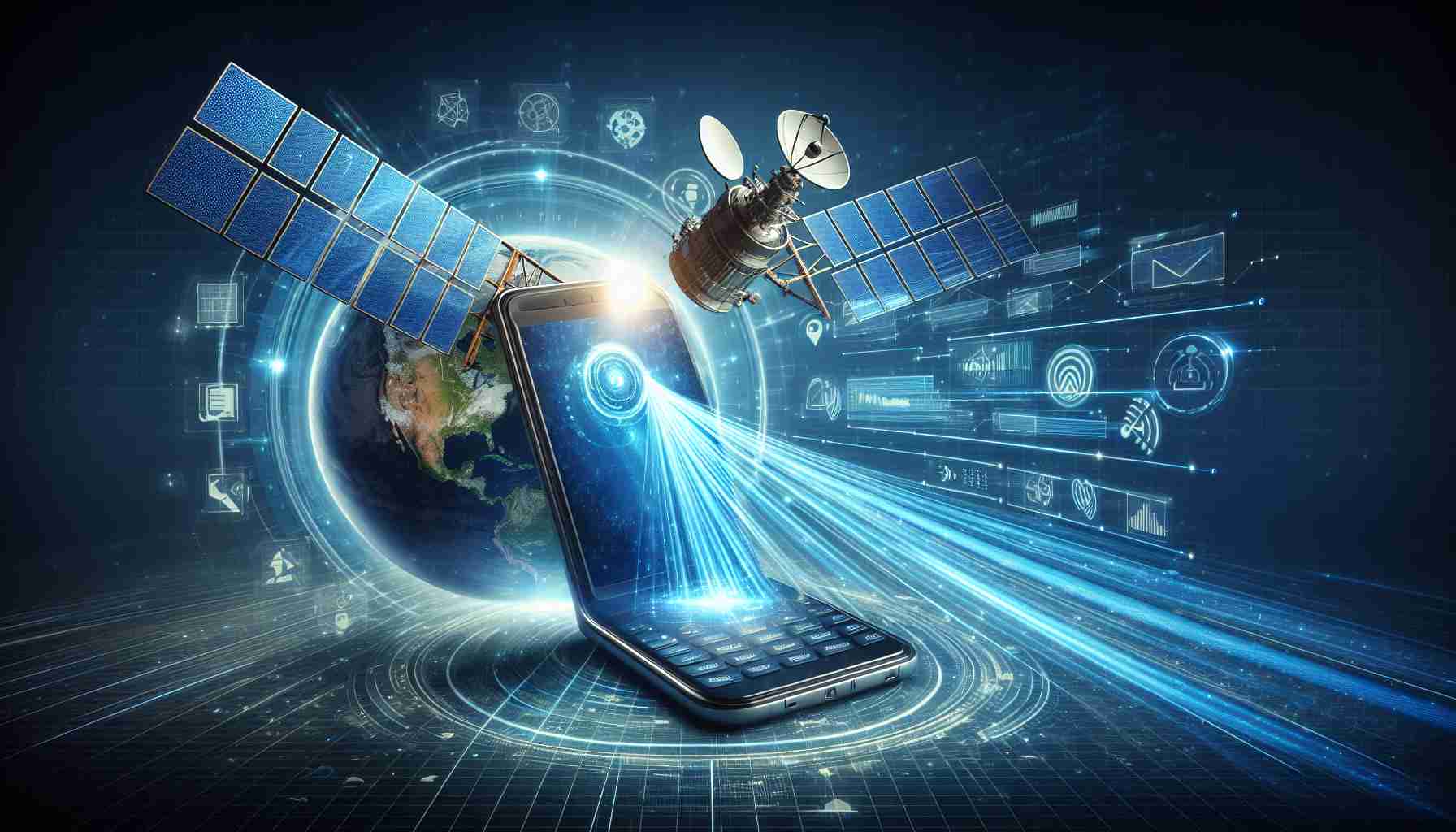Smartphone Manufacturers Embrace Satellite Communications
As remote areas of the world continue to seek uninterrupted connectivity, top-tier cell phone manufacturers, including Apple, are implementing satellite communication technologies into their handheld devices. This move promises to bring persistent communication capabilities even in locations where Wi-Fi and cellular networks are absent.
Apple’s iPhone Integrates Satellite Messaging
During the World Developers Conference (WWDC) hosted in Cupertino, California, Apple announced significant enhancements to the iPhone’s satellite messaging capabilities. The forthcoming ‘iOS 18’ update is slated to introduce an option that allows users to send messages via satellites when traditional cellular and Wi-Fi networks are unavailable. This feature will be compatible with iPhone 14 and subsequent models, offering seamless messaging through iMessage and SMS using satellite connectivity.
Global Investment in Direct-to-Device Communications
Emphasizing the strategic importance of satellite connectivity, Apple has invested heavily in Globalstar, securing 85% of the satellite operator’s low-earth-orbit (LEO) satellite capacity with a strategic $450 million investment. As a result, users of the iPhone 14 and 15 can access ‘Emergency SOS via Satellite’ to request help in critical situations without relying on ground-based services.
Direct-to-Device (D2D) Tech Poised for Growth
With D2D technology, which facilitates direct communication between devices without needing a base station network, emergency and disaster scenarios can benefit from uninterrupted communication channels. Apple and others foresee this technology as a potentially compelling feature to drive smartphone upgrades. Industry insights predict the D2D market to exceed $3 billion within the year.
Satellite Connectivity Goes Global with SpaceX and Others
The push for universally accessible communication services continues to accelerate, with Elon Musk’s SpaceX launching satellites intended for its ‘Direct to Cell’ mobile connection service. Partnering with a host of multinational telecommunications firms, SpaceX’s vision extends beyond text messaging to include voice calls and Internet of Things (IoT) connectivity.
China’s Tech Giants Join the Race
Chinese smartphone vendors are not far behind, as seen with Huawei’s Mate 60 series, which incorporates satellite calling features, and Xiaomi’s impending satellite-enabled folding phone model. Industry analysts anticipate that other manufacturers like Honor and Oppo will soon launch devices with satellite communications, while Samsung Electronics may integrate the technology into its Galaxy smartphones, following the establishment of global regulatory standards. However, the effective impact of these advancements may be regionally variable due to the existing density of communication networks in countries like South Korea.
Key Questions and Answers:
What are the advantages of integrating satellite messaging into smartphones?
The primary advantage is enhanced connectivity for users, allowing them to send and receive messages even in remote or underserved areas where traditional cellular or wireless networks are lacking or nonexistent. This can be crucial during emergencies or natural disasters when terrestrial networks might be unavailable or destroyed. Furthermore, it increases the reach of digital communications, enabling more consistent and reliable global coverage.
What are the challenges and controversies associated with satellite communication in smartphones?
Technical challenges include designing antennas that can communicate effectively with satellites while maintaining the slim and compact form factor of modern smartphones. Additionally, there are challenges related to power consumption and ensuring a reasonable battery life while using satellite communications. Controversies may arise from privacy concerns, as satellite messaging might invoke different legal and regulatory frameworks regarding data interception and monitoring. Moreover, government concerns about security and geopolitics can also influence the development and usage of such technology, especially between rival nations.
What are potential disadvantages of having satellite communications in smartphones?
Disadvantages include potentially higher costs for consumers, both in terms of the initial purchase price and ongoing service fees. Battery life could be reduced when using satellite connectivity due to the higher power requirements. Furthermore, the functionality may be limited, with slower data transfer speeds compared to terrestrial network services, and could be affected by environmental conditions. Users may also experience longer latency in communication.
Advantages of Satellite Communications in Smartphones:
- Global Coverage: Allows users to stay connected in remote areas without cellular network coverage.
- Emergency Communication: Enables access to emergency services in situations where traditional networks are unavailable.
- Disaster Resilience: Satellite networks are less susceptible to damage during natural disasters, providing a critical communication lifeline.
- Innovation: Can drive technological advancement and open up opportunities in sectors such as IoT.
Disadvantages of Satellite Communications in Smartphones:
- Cost: Increased expenses for consumers and potentially higher prices for satellite-enabled smartphones.
- Battery Usage: Greater power requirements could lead to shorter battery life on devices.
- Limited Functionality: Reduced data speeds and potential latency issues compared to conventional networks.
- Regulatory Hurdles: Complex international legal frameworks governing satellite communications must be navigated.
Related links to the main topic can be found here:
– Apple
– Globalstar
– SpaceX
– Huawei
– Xiaomi
– Samsung Electronics
